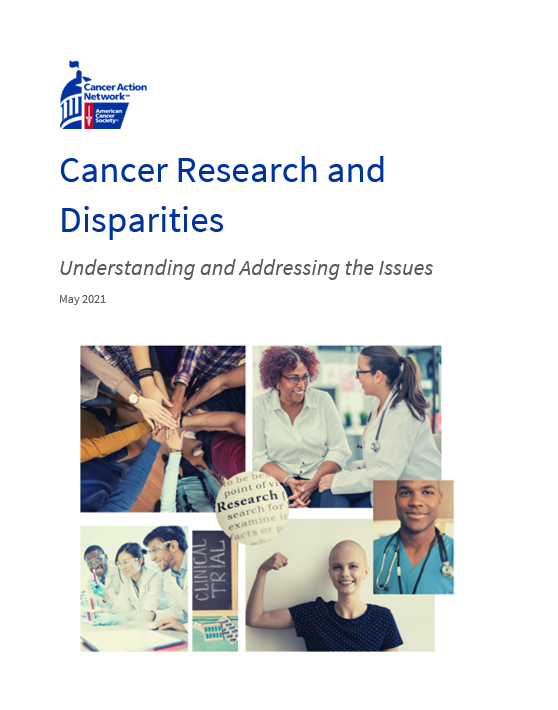The National Breast & Cervical Cancer Early Detection Program
For 30 years, the Centers for Disease Control and Prevention’s National Breast and Cervical Cancer Early Detection Program has decreased disparities in breast and cervical cancer deaths.
The COVID-19 pandemic has made clear the significant disparities that exist in our health care system and the need to address their root causes, including in cancer care. Ensuring all individuals – regardless of age, race, ethnicity, socioeconomic status, education, sexual orientation, insurance status, or zip code – have the same opportunities to prevent, detect, and treat cancer requires understanding what role research plays in potentially causing disparities as well as how research can help identify and address the causes of disparities. While disparities have been described in various domains of cancer research, each issue exists separately and has a different relationship to understanding and addressing disparities in clinical outcomes. The various domains of research disparities are explored in the ACS CAN report Cancer Research and Disparities: Understanding and Addressing the Issues.
need to address their root causes, including in cancer care. Ensuring all individuals – regardless of age, race, ethnicity, socioeconomic status, education, sexual orientation, insurance status, or zip code – have the same opportunities to prevent, detect, and treat cancer requires understanding what role research plays in potentially causing disparities as well as how research can help identify and address the causes of disparities. While disparities have been described in various domains of cancer research, each issue exists separately and has a different relationship to understanding and addressing disparities in clinical outcomes. The various domains of research disparities are explored in the ACS CAN report Cancer Research and Disparities: Understanding and Addressing the Issues.
Key Report Findings